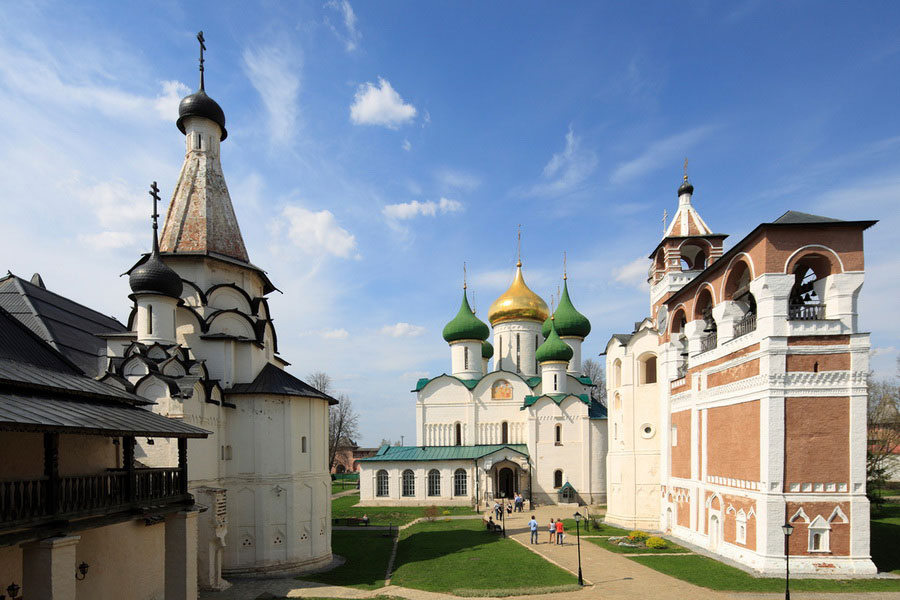
Standing on the picturesque banks of the Kamenka River in the northern part of Suzdal is an ancient monastery. Euthymios Savior monastery was erected there in 1352 and was both the monastery and the convent as well as the outpost reinforcing the city outskirts. For the latter purpose the Euthymios Savior monastery was surrounded with a thick wall with towers. The current wall with 12 towers belongs to the 17th century. In the same century the monastery was completely rebuilt in stone. The first abbot of the monastery was Reverend Euthymios of Suzdal after whom the monastery was later named. A small temple over the tomb of Euthymios (1564) eventually grew up and became the current Transfiguration cathedral. This five-domed temple with emerald-green heads is the main building of the monastery. Its architectural shape was created for over three centuries. Large light drums have narrow windows. The smaller ones crown the two smaller side-chapels of the temple. From the east, adjacent to the cathedral are deep altar exedras with smooth frameless windows niches. The interior of the Transfiguration cathedral is very rich. In the 17th century the cathedral was decorated with exterior and interior painting. Along the perimeter the cathedral is surrounded with the belt of arches and columns.
In front of the cathedral on the square there is the Assumption Church (1525) with a belfry. The Assumption Church is the unique structure of its era, because it combines the temple and the refectory. The church is very compact and elegant. The openwork kokoshniks preceding the tent dome give the temple its festive look.
From the south, adjacent to the Assumption Church are the houses of Archimandrite (16th -17th centuries).
The monastery belfry (16th -17th centuries) will impress you with its original design. Outwardly it resembles an arched gallery with bells inside. The belfry used to have dozens of bells, which were considered the most sonorous in Suzdal.
There, in the monastery is one of the most spacious in Russia brethren’s building. Its length is over 100 meters and it can accommodate more than 150 cells.
The most interesting part of the monastery complex is the prison built by the decree of Catherine II in 1764 for the peasants, who took part in the rebellion led by Pugachev. Later it became the place of imprisonment of religious and political criminals. In 1905 the prison was abolished.
Now the Euthymios monastery is the largest museum of the city. Today, the temples of the monastery are not active - they house the museum exhibitions.

